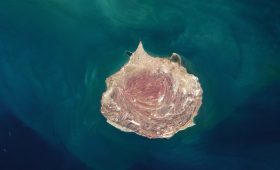Jodensavanne: A Historical Journey in Suriname
Jodensavanne, located about 50 kilometers south of Paramaribo, Suriname’s capital, is a site of historical significance. This former Jewish settlement offers a glimpse into the past, where history, culture, and nature intersect. If you’re interested in history or cultural exploration, Jodensavanne provides a unique experience.
The History of Jodensavanne
In 1639, Sephardi Jews from the Netherlands, Portugal, and Italy began settling in Suriname, initially in the old capital, Torarica. By 1652, a significant group led by Francis, Lord Willoughby, established a community in what is now known as Jodensavanne. This settlement was built on a raised area surrounded by fields, hence the name “Savanne.”
The Jewish community developed a sugar-cane plantation economy, utilizing African slaves for labor. At its peak around 1700, Jodensavanne had approximately 570 residents. The settlement was granted various privileges, such as the right to operate their own court and freedom of religion, which were preserved and expanded by the Dutch when they took control of Suriname.
However, Jodensavanne faced numerous challenges, including conflicts with Indigenous populations and slave revolts. In 1678, the settlement was attacked by the Carib people, and in 1690, a slave revolt led to the death of a plantation owner. Despite these difficulties, the community thrived for a time, with the construction of the Beracha ve Shalom synagogue between 1665 and 1671, marking a significant development in Jewish life in the region.
By the mid-18th century, Jodensavanne began to decline as many residents moved to Paramaribo. Economic challenges, such as the collapse of a major sugarcane importer and the introduction of sugar beet cultivation in Europe, contributed to this decline. By 1790, the settlement had largely been abandoned.
Exploring the Ruins
Today, visitors can explore the ruins of Jodensavanne, including the remains of the synagogue and several tombstones. The synagogue’s foundation and walls still stand, offering a tangible connection to the past. Informative plaques provide context and history, enhancing the experience for those interested in the area’s rich heritage.
Getting There
Jodensavanne is accessible by car or boat. The drive from Paramaribo takes about 1.5 hours on well-maintained roads. Renting a car offers flexibility, but check with rental companies for any specific requirements. Alternatively, several tour operators offer guided boat tours along the Suriname River, providing a scenic route to the site. Availability and duration of these tours can vary, so it’s advisable to inquire in advance.
Best Time to Visit
The best time to visit Jodensavanne is during the dry season, from February to July, when the weather is more predictable and comfortable for exploring. Suriname’s tropical climate means warm and humid conditions year-round, so pack lightweight clothing, sunscreen, and insect repellent.
Local Transportation
Once at Jodensavanne, most attractions are within walking distance. The compact nature of the site makes it easy to explore on foot. For a more in-depth experience, consider hiring a local guide who can provide insights and stories about the area’s history.
Jodensavanne offers a unique opportunity to delve into a significant chapter of Suriname’s history. While the journey may require some planning, the experience of exploring this historical site is both educational and rewarding.




